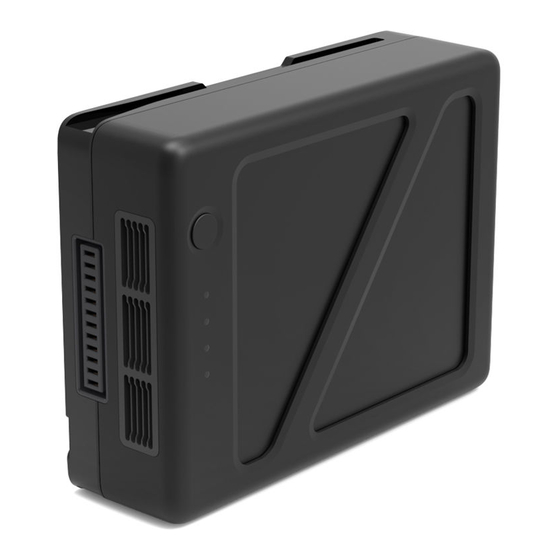dji TB50 Manual de manutenção - Página 6
Procurar online ou descarregar pdf Manual de manutenção para Acessórios para câmaras dji TB50. dji TB50 11 páginas. For m200 series drones
Também para dji TB50: Utilizador Manualline (3 páginas)

station. Up to 8 batteries can be updated at once in the health management system of the Pilot
App.
Battery Charging
Always use a DJI approved charger. DJI takes no responsibility if a battery is charged using a
non-DJI charger. DJI batteries are built to communicate with DJI chargers.
One issue with third-party chargers is their charge rate can be greater than 1C. Though the
battery is charged faster, a charge rate >1C will reduce the service life of the battery and cause
damage to the cells due to excessive internal temperatures and/or lithium-plating. You can
calculate the charge rate for a charger by dividing the amps output from the charger by the
capacity of the battery. For example, with the DJI Mavic 2 Enterprise Battery Charger =
(3.41A/3.85A = .88C). Third-party chargers may also damage the terminals of the batteries as
well due to improper alignment, safeguards, and guides.
There is protection built into DJI chargers and batteries in regards to making sure batteries are
not charged at incorrect temperatures. We cannot cannot guarantee this feature will work with
third-party chargers. In some situations, it is critical to get batteries charged as soon as they are
at an acceptable internal temperature, and with a DJI charger it is ok to place a battery on the
charger after a flight as long as the charger and battery are placed in a well-ventilated area (i.e.
not covered or heated). If the charging need is not immediate, it is best practice to allow the
battery to cool down before placing it on the charger.
The intelligent flight batteries are designed to stop charging when full. However, it is best
practice to monitor the charging progress and disconnect the batteries when fully charged.
Battery Storage
The ideal storage temperature for DJI batteries is between 71.6°F and 86°F (22°C to 30°C).
Though this may not always be possible, it is important to avoid habits such as storing batteries
in vehicles that will routinely get very hot or very cold and are outside the recommended storage
temperature. Always store batteries in a well-ventilated place away from direct sunlight and heat
sources. Remove batteries from drones when storing. Do not allow batteries to get wet. Storing
batteries at a proper temperature can help minimize non-recoverable capacity loss.
DJI Intelligent Batteries automatically discharge to protect the integrity of the battery cells. In
most cases, you can set a time from 1 to 10 days in the app for the batteries to start
self-discharging themselves down to 60%. If there is no option present in the app the battery will
default to 10 days. If a battery is below 40-60% it should be charged until it reaches this range
for storage.
